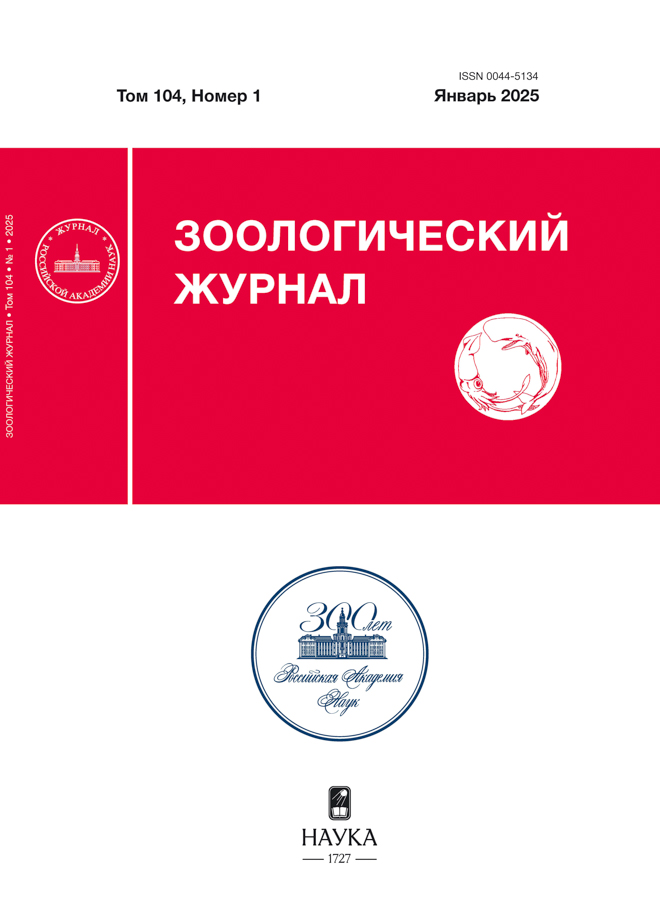Morphological features of the east Siberian moose ((Alces americanus pfizenmayeri, Cervidae) in Yakutia
- Authors: Argunov А.V.1
-
Affiliations:
- Institute for Biological Problems of the Cryolithozone, Siberian Branch, Russian Academy of Sciences
- Issue: Vol 104, No 1 (2025)
- Pages: 83-92
- Section: ARTICLES
- URL: https://kld-journal.fedlab.ru/0044-5134/article/view/682141
- DOI: https://doi.org/10.31857/S0044513425010064
- EDN: https://elibrary.ru/SYGMXD
- ID: 682141
Cite item
Abstract
Morphological features of the East Siberian moose were studied in central and southern Yakutia, Siberia from 2005 to 2024. Body size was measured in 15 adult moose, hair colouration was described in 46, and horn shape in 78 individuals. According to morphometric characters, the East Siberian moose (Alces americanus pfizenmayeri) of Yakutia occupies a position intermediate between A. a. buturlini and A. a. cameloides and has morphological features characteristic of a subspecies. Four colour variations have been identified in the body colouration. The most common colouration is light brown (43.4%). In head colouration, 5 colour shades are detected, only brown colouration is common in both sexes. There are some sex differences in head colouration, females being coloured in lighter tones, vs males in darker tones. In males, 4 types of horn shape are identified: shovel-shaped horns with a divided shovel, with a narrow shovel and long ramifications, shovel-shaped with an undivided shovel and stag-shaped horns. Specimens with shovel-shaped antlers with a divided shovel are the most frequent (82.0%). A. a. buturlini has been recorded from central Yakutia.
Keywords
Full Text
About the authors
А. V. Argunov
Institute for Biological Problems of the Cryolithozone, Siberian Branch, Russian Academy of Sciences
Author for correspondence.
Email: argal2@yandex.ru
Russian Federation, Yakutsk
References
- Боескоров Г. Г., 1996. О таксономической структуре рода Alces (Artiodactyla, Cervidae) // Вестник зоологии. № 6. С. 70–78.
- Боескоров Г. Г., 1998. Дифференциация и проблема систематики лосей (Artiodactyla, Cervidae, Alces) // Зоологический журнал. Т. 77. № 6. С. 732–744.
- Боескоров Г. Г., 2001. Систематика и происхождение современных лосей. Новосибирск: Наука. 120 с.
- Боескоров Г. Г., Пузаченко А. Ю., 2001. Географическая изменчивость черепа и рогов лосей (Alces, Artiodactyla) Голарктики // Зоологический журнал. Т. 80. № 1. С. 97–110.
- Бромлей Г. Ф., Кучеренко С. П., 1983. Копытные юга Дальнего Востока СССР. М.: Наука. 305 с.
- Гептнер В. Г., Насимович А. А., Банников А. Г., 1961. Млекопитающие Советского Союза: Парнокопытные и непарнокопытные. М.: Высшая школа. Т. 11. 1004 с.
- Данилкин А. А., 1999. Оленьи (Cervidae). Млекопитающие России и сопредельных регионов. М.: Геос. 552 с.
- Дицевич Б. Н., 1997. История, систематика и морфологические особенности лося Восточной Сибири // Вестник ИРГСХА. № 5. С. 7–9.
- Егоров О. В., 1965. Дикие копытные Якутии. М.: Наука. 259 с.
- Егоров О. В., 1971. Лось // Млекопитающие Якутии. М.: Наука. С. 551–567.
- Ивантер Э. В., 1971. Элементарная биометрия. Петрозаводск: Петрозаводский государственный университет им. О. В. Куусинена. 64 с.
- Капланов Л. Г., 1948. Тигр, изюбрь, лось. М.: Изд-во Московского общества испытателей природы. 125 с.
- Седихин Н. В., 2022. Индивидуальная изменчивость серьги и рогов европейского лося на территории Ленинградской области по результатам мониторинга с помощью фотоловушек на искусственных солонцах // Трансформация экосистем. Т. 5. № 4 (18). С. 136–150.
- Соколов И. И., 1959. Фауна СССР. Млекопитающие. Т. 1. Вып. 3. Копытные звери. М. – Л.: Изд-во АН СССР. 600 с.
- Смирнов М. Н., 2014. Лось и кабан в Центральной Сибири. / М. Н. Смирнов. Красноярск: Сиб. федерал. ун-т. 298 с.
- Рожков Ю. И., Проняев А. В., Давыдов А. В., Холодова М. В., Сипко Т. П., 2009. Лось: популяционная биология и микроэволюция. М.: Товарищество научных изданий КМК. 2009. 520 с.
- Филонов К. П., 1983. Лось. М.: Лесная промышленность. 246 с.
- Чернявский Ф. Б., Железнов Н. К., 1982. О распространении и систематике лося Северо-Восточной Сибири // Бюллетень Московского общества испытателей природы. № 87. Вып. 5. С. 25–32.
- Чернявский Ф. Б., Домнич В. И., 1989. Лось на северо-востоке Сибири. М.: Наука. 128 с.
- Hundertmark K. J., Shields G. F., Udina I. G., Bowyer R. T., Danilkin A. A., Schwartz C. C., 2002. Mitochondrial phylogeography of Moose (Alces alces L.): late Pleistocene divergence and population expansion // Molec. Phyl. and Evol. V. 22. № 3. P. 375–387.
- Kolesnikov V. V., Kozlovskii I. S., 2014. Geographical variation of antler morphology of moose (Alces alces) in Russia // Acta Theriologica. V. 59. P. 443–448.
- https://doi.org/10.1007/s13364-014-0175-z
Supplementary files














